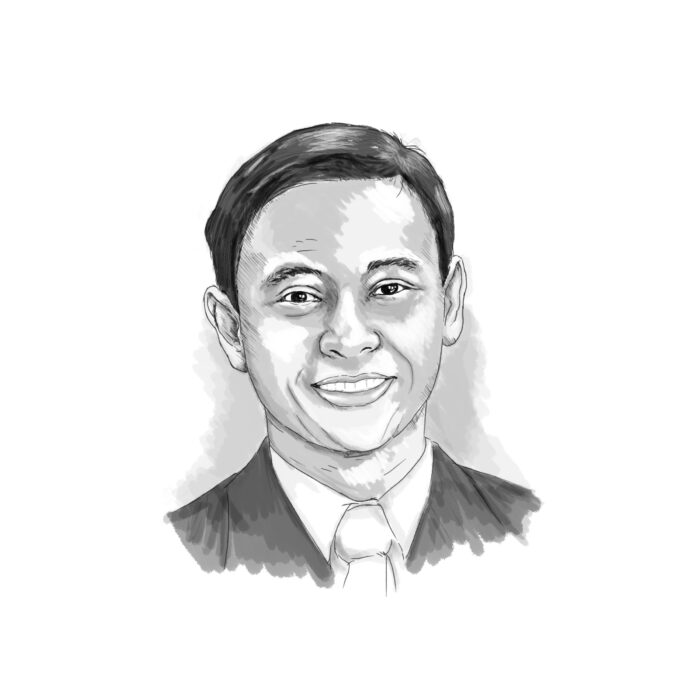BETTER DAYS
Senator Sonny Angara
Filipino healthcare professionals have long been recognized for their capabilities and professionalism, and the outstanding quality of care they provide their patients. Whenever I travel overseas, be it in the United Kingdom, the United States or some other jurisdiction that employs a significant number of Filipino healthcare workers, the feedback I get is always about how competent and dedicated they are to their jobs.
Juergen Steinmetz, chairman of the World Tourism Network, experienced firsthand how it was to receive medical treatment here in the Philippines. Last April, Steinmetz was in Manila as a delegate of the World Travel and Tourism Council global summit. During his visit, he contracted a rare skin disease and sought treatment at the Makati Medical Center. He described his ordeal as life changing and had nothing but high praise for the doctors who correctly diagnosed his condition and for the medical facility that he said was “beyond any standard I’ve seen anywhere in the world, including my home state in Hawaii.”
With hospitals that operate using state of the art equipment and facilities with medical personnel that speak perfect English and with a human touch, Steinmetz was surprised at why medical tourism is still not that big in the Philippines.
The same question has also crossed my mind several times, particularly on how we are missing out in terms of opportunities from medical tourism. I am a firm believer that Filipino doctors, nurses and other healthcare professionals are among the best in the world. Patients with all sorts of ailments can avail of the best treatments and at a cost that is relatively lower than what similar facilities outside of the country are charging.
In the 2020 Medical Tourism Index, the Philippines ranked 24 out of 46 countries due in part to the inability to market the country as a prime destination and the lack of some key facilities and infrastructure. Globally, the size of the medical tourism market was estimated at $11.5 billion in 2020 and is projected to grow up to $53 billion by 2028.
According to the Medical Tourism Association, around 14 million people travel outside of their countries for medical care every year. One research suggests that the global anti-aging market alone is already valued at $60.42 billion as of 2021. This is expected to double in growth by 2030.
A McKinsey and Company report also indicated that 40 percent of people travel outside of their country to seek medical care due to the availability of advanced technology and highly trained professionals. For some patients, the cost of their procedures in the accepting country is lower than what their home countries are charging. In many cases, they do not have to wait for long periods to get the treatment they require.
One of the fast growing segments of medical tourism is cosmetic treatment, a specialized field that includes body fat reduction, skin rejuvenation, anti-aging and other procedures that people avail of to improve their appearance, self-esteem and self-confidence. I recently spoke at the 10th Annual Convention of the Philippine Academy of Aesthetic and Age-Management Medicine Inc., and I was made aware of the wide range of specializations of its physician members. They include aesthetic and clinical dermatology, age-management and regenerative medicine, plastic and cosmetic surgery, multi-specialty physicians well-versed in genetics, pediatrics, obstetrics and gynecology, cardiology, ophthalmology, family and internal medicine, anesthesiology, pathology, and geriatrics.
So there is no shortage of experts available in the country for medical tourists. Whatever treatment or procedure that they want, they can find it here and be confident that they will get top notch services and hospitality that is second to none. What makes the Philippines even more attractive as a medical tourism destination is its extensive list of tourist destinations that the patients can explore and enjoy after going through their procedures.
There are still a lot of steps that we have to take before we can compete with our neighbors such as Thailand, South Korea and Singapore who are already reaping the benefits of their growing medical tourism industry. We need to do more to improve the marketing of the Philippines as a medical tourism destination. We should beef up our infrastructure. We should pursue this opportunity in a concerted manner, as part of our efforts to restart our ailing tourism industry.
Email: [email protected]| Facebook, Twitter & Instagram: @sonnyangara
(Senator Sonny Angara has been in public service for 18 years — nine years as Representative of the lone District of Aurora, and nine as Senator. He has authored, co-authored, and sponsored more than 330 laws. He is currently serving his second term in the Senate. )
SIGN UP TO DAILY NEWSLETTER
CLICK HERE TO SIGN-UP










